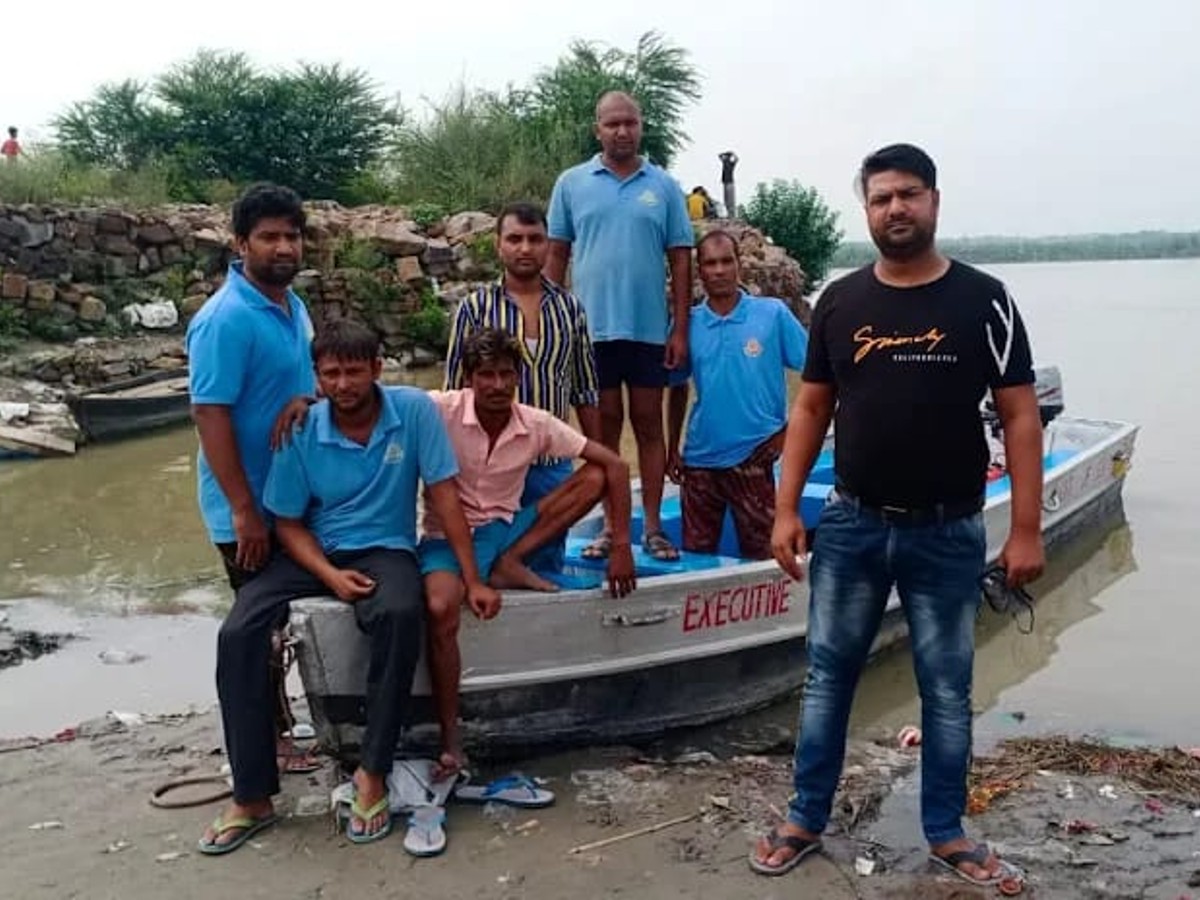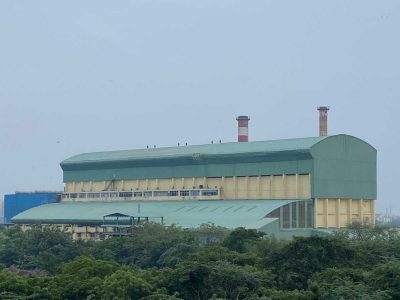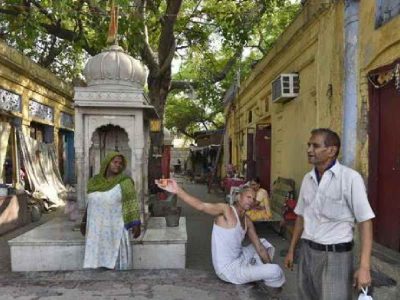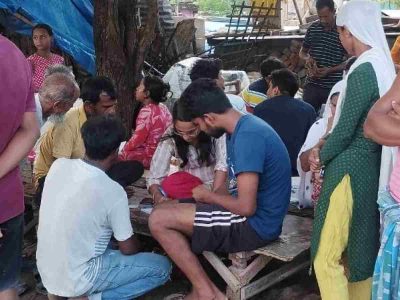Rescue diving is one of the “riskiest” professions, yet the most thankless one as the nameless saviours live a life with no credit for their immense contribution to the society. “We don’t get awards, no news specials are made for us; and we don’t get the respect that any other government servant would get,” said Harish Kumar, in-charge of Rescue Boat Club, a Delhi government agency responsible for those who fall in the Yamuna river.
Kumar has 30 men working under him in three different shifts that carry out rescues when called. They also search for and recover the bodies of people who have drowned or been trapped in bodies of water such as rivers, lakes, rivulets, and drains all year long, especially during floods.
“We put in a lot of effort to save individuals, but we still don’t get enough recognition, and occasionally we have to deal with public outrage and end up needing to call the police for protection,” he reveals. He goes on to say that they are not looking for extra rewards, but some credit where it’s due will lift the morale of the rescue divers.
Kumar describes the physical demands of the job as one of its difficulties. “Especially around this time of year, when the Yamuna floods annually, we occasionally have to swim against the tide to rescue or find a dead person. When the body is found, we hand it over to the police,” he explains.
Always on standby
The rescue divers wait in their dingy waiting rooms which have a few simple iron chars, and no mattresses. Besides PCR, they receive calls from 100 and 1077. Imran (34), a resident of Jagatpur who has been a rescue diver for the past eight years, says, “The next step is for us to get there as quickly as we can. Calls are received from all across Delhi-NCR. As soon as we arrive, we make an effort to keep people away from any potentially hazardous areas before beginning the search for the corpse.”
Read more: A river runs through their homes
Recovery teams often narrow down the search area using the last known location and eyewitness testimony, post which the teams of search and rescue professionals search the area. The water’s flow determines where to find the body. “When it is high, then our job becomes relatively tough. But the feeling when we are able to rescue or save someone is really fantastic”, says Imran.
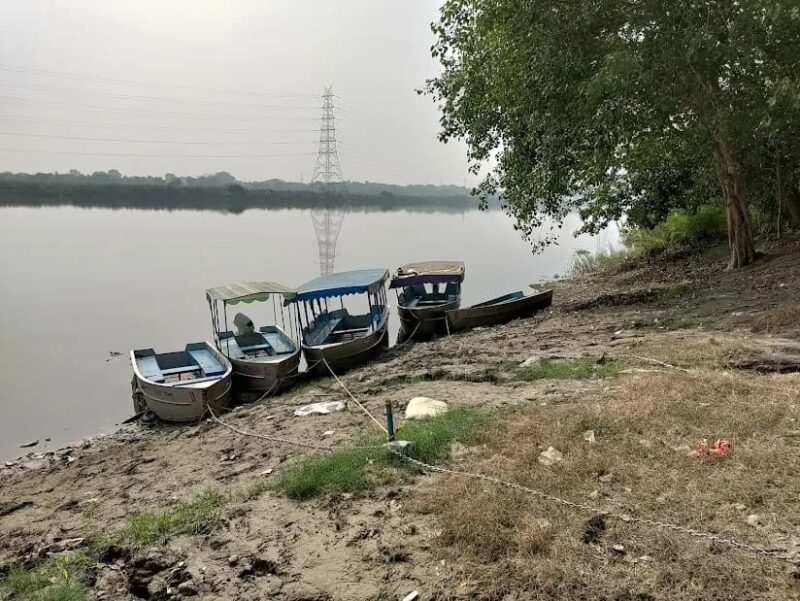
SET TO SAVE: The boats used for rescue operations
Most dangerous stretches
Most drowning incidents occur in the Bawana River, where the water flows rapidly and deeply, rising 8 to 10 inches above the average height of people in our nation.
“Most of the people we rescue are between the ages of 10 and 25, and half of these situations might be prevented if people were a little more careful and cautious with their lives”, says Imran.
However, not all the calls they receive are about people drowning in waterways. Suicide calls are more frequent, and the younger generation makes up the majority of those calls. Most of these occurrences take place at the Wazirabad Bridge, ISBT, and DND Flyover.
Frequent calls for help
According to Kumar, during the Yamuna floods, a 23-year-old boy attempted to commit suicide by jumping from the ISBT Flyover, but instead, got entangled in a pipe and got stuck there. “It took us around five to seven minutes to get there and get him out safely”, he says.
He continues, “We receive approximately five calls every day. This includes the call we received yesterday, when a youngster died in Burari and a dead body was discovered in Wazirabad. We received a complaint on 4 September that a child was drowning. When we arrived, we discovered that the child’s father was also present, was drunk and sleeping, and was unable to assist or prevent the child from falling below the danger threshold. These same guys will be willing to fight us when we are unable to find or rescue the body. So, unfortunately, these are examples of irresponsible behaviour.”
Safety of the divers
“The safety of the drivers is something I make sure doesn’t get disregarded, and compromises have been made for that,” Kumar stated when questioned about the availability and quality of safety gear offered to the rescue divers.
Talking about the quantity of safety equipment, Kumar said, “Right now, we have around 16 aluminum boats, 13 rescue boats, and 3 pedal boats, 12 boat engines, 13 boat trolleys, and 30 life jackets, 13 boat footrests, 15 boat chappu, and 7 talwars, along with 4 bundles of plastic rope.” There are 100 fluorescent jackets with 3 anchors in a fully functional state to add to the gear.
“However, many of our rescue divers have grown up on the outskirts of Yamuna and Wazirabad itself and do not require equipment when it comes to rescue; they’ve lived their lives here and before joining our team they’ve faced such instances also”, says Kumar.
Naeem Khan, another rescue diver, has been working as a rescue diver for the past 12 years. Khan claims that their eyes are swollen from frequently diving into the dirty water and that they have to take a bath at least three to four times to keep themselves clean. He says, “Even in the winter, there are times when we come home covered in the waste from water, and our children avoid touching us because we have rashes all over our bodies.”
He adds that their rescue operations require them to enter areas that are often rocky or difficult to navigate. “When we touch any rock bodies, the agony is excruciating, but we must keep going for the person to be saved or the body to be discovered”, he adds.
Khan continues that although the government supports them and provides them with good quality safety equipment and other basic amenities, healthcare is something that does not get proper consideration. Lung infection, fungus, and skin cancer are some of the long term health hazards that divers are at a risk of, and most of these issues are detected at an early stage. “There should be some other special health benefits for rescue divers. I’m saying this because our job exposes us to a lot of health hazards that most of the time we don’t have knowledge of. We do all of this to save other people, but what about us and our health? That should be saved too, right?”, Khan questions.
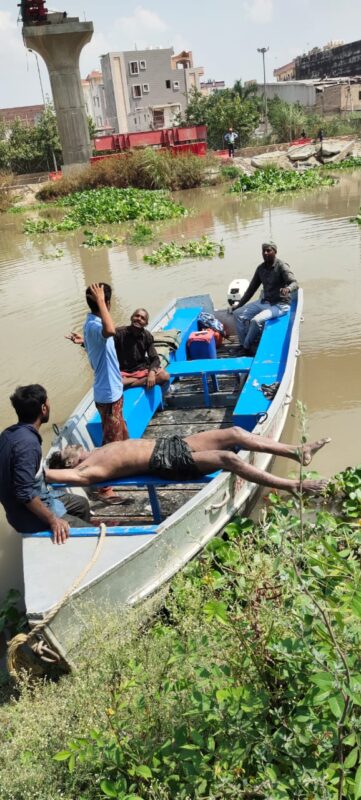
SAVIOUR ONBOARD: The rescue team with the young man they saved from drowning
Saving a life amid bureaucracy
About a week ago, a group of five people including three teenagers of 16, 17 and 19 years in age were washed away in Yamuna’s current. Hari Kishor, father of Lalit, who was one of the five drowned people, stated that a few of them could have been saved if the police had arrived on time.
In a conversation regarding the incident, he states that they all belonged to the Salarpur Village in Noida. “They were there with a group of 15-16 people in order to immerse the idols of Shri Krishn in Yamuna”, stated Hari.
“The moment we reached the place, all five of them were already in the water along with the idol. The water wasn’t deep enough and thus they went deeper and deeper despite our warnings, and within a few minutes, with a splash of water, they disappeared from our eyes”, Hari continued, failing to control the tears in his eyes.
“My son and everyone else could have been saved, if there were enough safety measures, or if the police would have just arrived without explaining to us about the areas and jurisdiction”, he said.
When the police arrived and the divers dived into the water, it was too late. “I, along with other parents, lost the beloved children forever”, Hari concluded.
A police officer who was present at the site, told Patriot, “We are all victims in these cases, we are all guilty. But we just can’t pass on the blame to each other’s head”, he stated.
Under the condition of being anonymous, he continued, “They shouldn’t have gone there in the first place when they knew that there won’t be any sort of security or safety at the site. There should have been professional divers or swimmers at least. Or the police should have been informed beforehand, so that some of us would have been there at the site. It’s a collective mistake, and we are all equally responsible for it.”
Aniruddh, a diver who’s known to the area, stated that the water-level is quite unjust and the base is full of big and small pits. “It would have been better if they consulted somebody before going in the water. Or would have just used the classical bamboo stick for the purpose of measuring the depth”, he stated.
“These acts of overconfidence are one of the biggest reasons for such deaths”, he concluded.
All the five victims – Ankit, Lucky, Lalit, Beeru and Ritu – were very young and none of them were above the bar of 20 years in age. They belonged to different regions of Uttar Pradesh and were involved in small businesses to sustain their families while continuing their studies.
Unprecedented accidents
A former student of the University of Delhi, under the garb of anonymity, informed Patriot about an incident when a few students went for a cleanliness drive to Yamuna, being members of a college society.
“We reached there in the middle of the day for a noble cause. However, we were completely unaware of the dangers that were about to unfold”, she stated.
“One of our team members working for the drive slipped and went directly to the water with great speed. It happened within the blink of an eye. In a moment, we felt completely helpless. We didn’t even think something like this would happen, and it happened right in front of our eyes”, she said.
“The lack of safety equipment, our ignorance and overconfidence, everything flashed in front of us. But by God’s grace, one of us knew how to swim. They straightaway jumped into the water without a second thought, and dragged the person out of Yamuna”, she said.
“We all remember that day as a nightmare. The college ended a long ago, but none of us have ever visited a river bank”, she concluded.
Instagram: instagram.com/thepatriot_in/
Twitter: twitter.com/Patriot_Delhi
Facebook: facebook.com/Thepatriotnewsindia

